Attack on Security Titans: Earth Longzhi Returns With New Tricks

After months of dormancy, Earth Longzhi, a subgroup of advanced persistent threat (APT) group APT41, has reemerged using new techniques in its infection routine. This blog entry forewarns readers of Earth Longzhi’s resilience as a noteworthy threat.
Read time: ( words)
We discovered a new campaign by Earth Longzhi (a subgroup of APT41) that targets organizations based in Taiwan, Thailand, the Philippines, and Fiji. This recent campaign, which follows months of dormancy, abuses a Windows Defender executable to perform DLL sideloading while also exploiting a vulnerable driver, zamguard.sys, to disable security products installed on the hosts via a bring-your-own-vulnerable-driver (BYOVD) attack. We also found that Earth Longzhi uses a new way to disable security products, a technique we’ve dubbed “stack rumbling” via Image File Execution Options (IFEO), which is a new denial-of-service (DoS) technique.
In addition, we’ve noticed that this campaign installs drivers as kernel-level services by using Microsoft Remote Procedure Call (RPC) instead of using general Windows application programming interfaces (APIs). This is a stealthy way to evade typical API monitoring. We also found some interesting samples in our investigation that contained information not only on Earth Longzhi’s potential targets, but also techniques for possible use in future campaigns. This blog entry seeks to forewarn readers that Earth Longzhi remains active and continues to improve its tactics, techniques, and procedures (TTPs).
Attack vectors
Earth Longzhi’s new campaign samples showed a tendency to exploit public-facing applications, Internet Information Services (IIS) servers, and Microsoft Exchange servers to install Behinder, a well-known web shell, rather than send pieces of document-based malware through email. As seen in this campaign, Behinder proved to be a powerful web shell variant that can support multiple backdoor functions, including file operation, remote command execution (RCE), interactive shell, and Socks5 proxy.
Malicious actors use this web shell to discover intranet information and deploy other pieces of malware and hacking tools on a compromised machine.
New tricks for DLL sideloading
In the group’s new campaign, the malware was launched through legitimate Windows Defender binaries, MpDlpCmd.exe and MpCmdRun.exe, instead of using document-based samples. The malware was disguised as a legitimate DLL, MpClient.dll and was loaded by Microsoft Defender’s binaries. Our investigation showed two different types of malware that were launched through this technique: One is a new variant of Croxloader, and the other is a tool that can disable security products, which we dubbed “SPHijacker.”
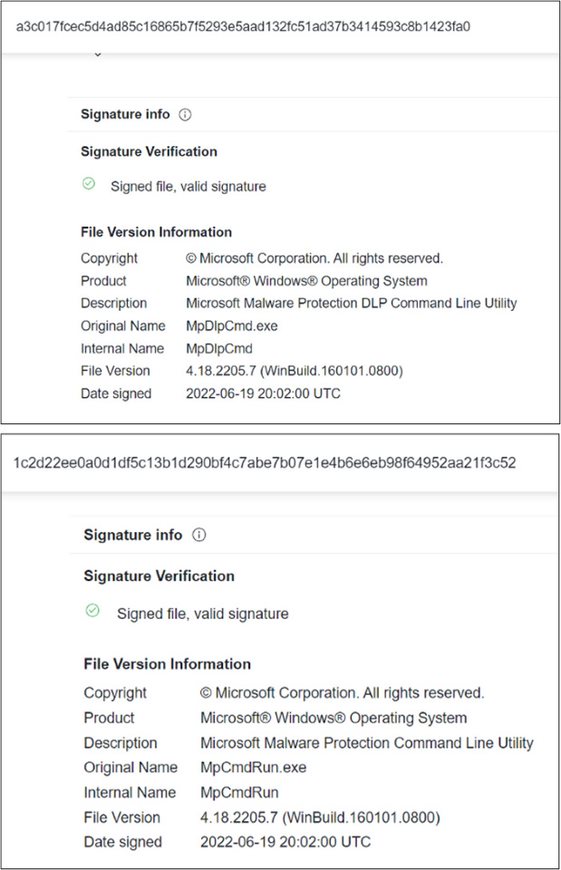
New Croxloader variant
Earth Longzhi’s new campaign launched Windows Defender binaries as a system service. The new Croxloader variant, disguised as MpClient.dll, was subsequently loaded. Once launched, Croxloader reads the payload named MpClient.bin and decrypts its content. The new variant is almost identical to the older ones, except that it uses a different decryption algorithm. The algorithm used in the original variant is (SUB 0xA) XOR 0xCC, while the algorithm for the new variant is (ADD 0x70) XOR 0xDD. The final payload is identified as a Cobalt Strike beacon, which we detected as Backdoor.Win64.COBEACON.ZYKB.
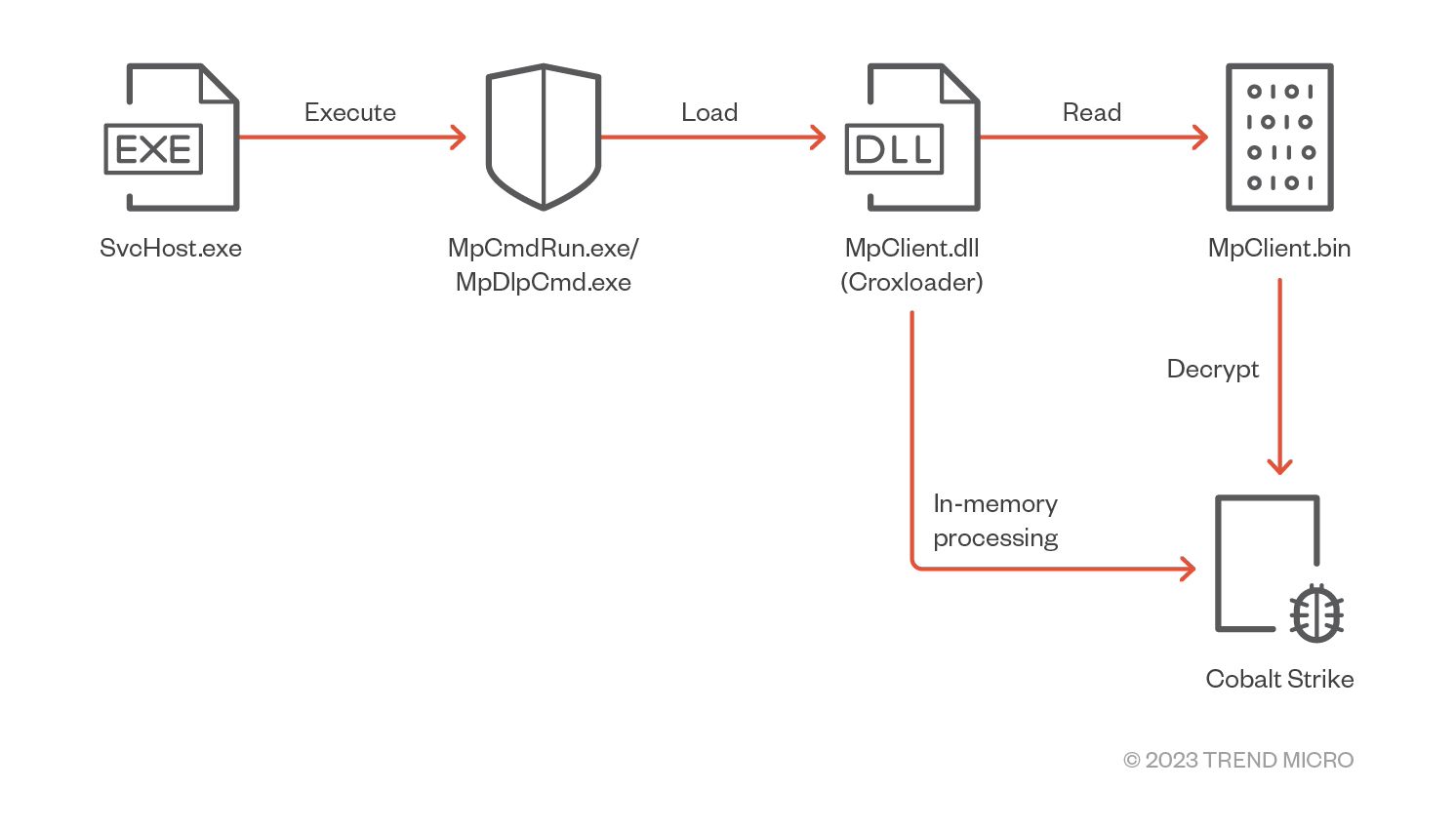

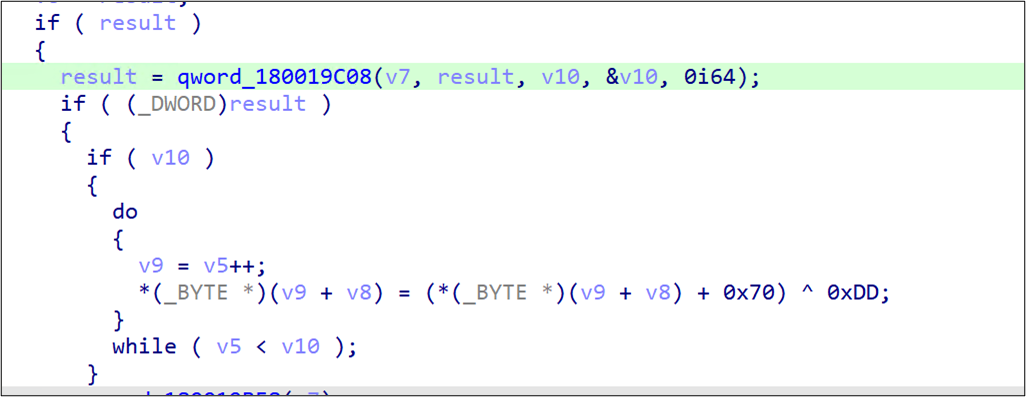
SPHijacker
SPHijacker, a new tool designed to disable security products, adopts two approaches to achieve this purpose. One approach terminates the security product process by using a vulnerable driver, zamguard.sys, published by Zemana (vulnerability designated as CVE-2018-5713). Meanwhile, another approach disables process launching by using a new technique that we named stack rumbling, which we will discuss in detail in succeeding paragraphs. Notably, this is the first time we’ve seen such a technique being used in the wild.
Technical analysis
Based on our analysis, the mmmm.sys file (originally named Zamguard64.sys) is decrypted and dropped, after which it is registered as a service. It then creates and starts the service through RPC as opposed to calling general Windows APIs to set up the service, as shown in Figure 6. We reckon that such a technique enables malicious actors to evade API call monitoring.
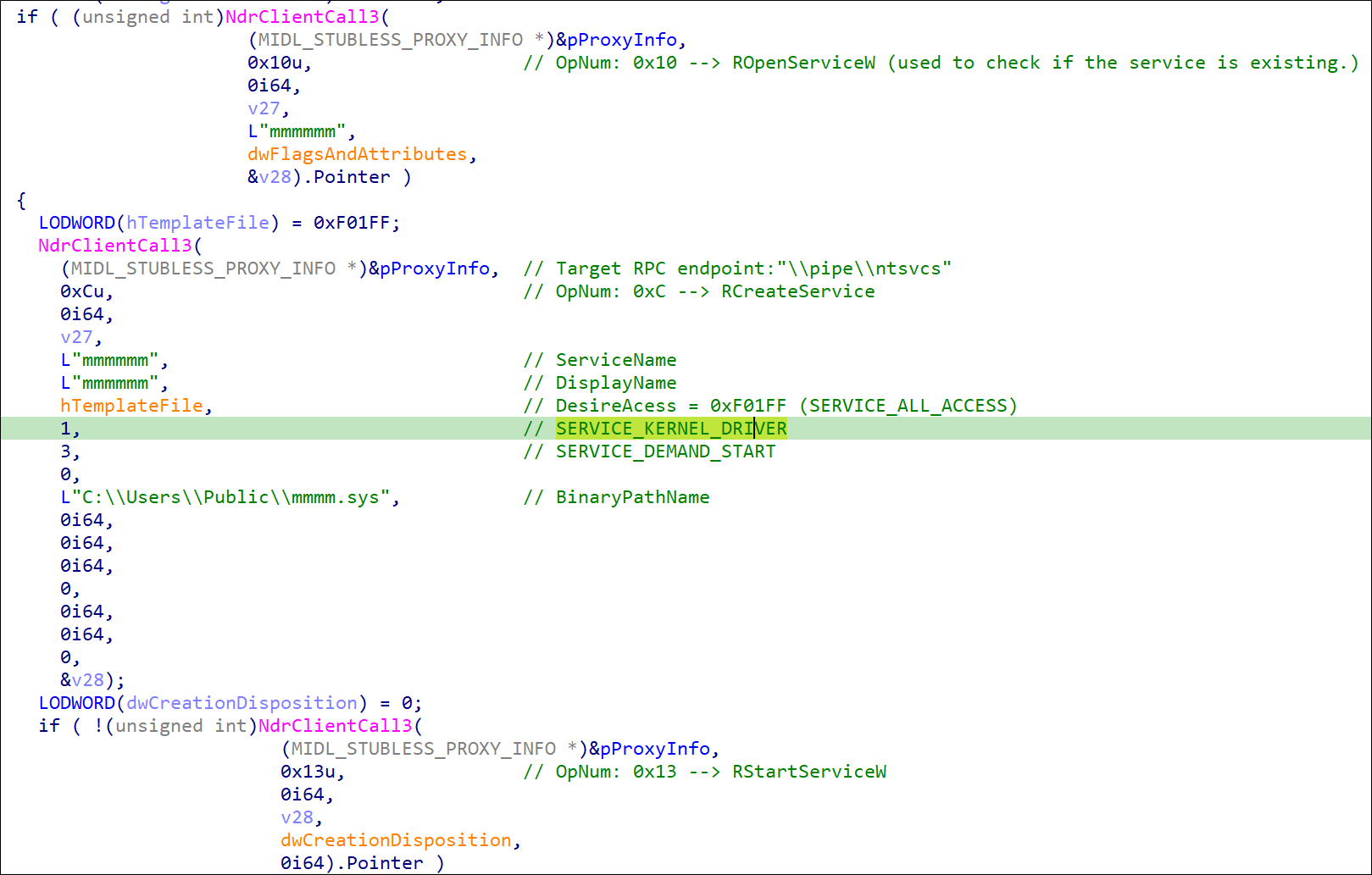
Once the service successfully starts running, SPHijacker proceeds to open the handle to the device named \.ZemanaAntiMalware to access the running driver. It then begins terminating the processes of security products based on a predefined list. We detail the workflow of the operation here:
- It sends input and output control (IOCTL) code 0x80002010 to register the process by its process ID (PID), as trusted by the driver, as seen in Figure 7.
- It conducts process discovery and collects the PID of targeted processes if they are running.
- It sends IOCTL code 0x80002048 to terminate targeted processes by calling ZwOpenProcess and ZwTerminateProcess, as seen in Figure 8.

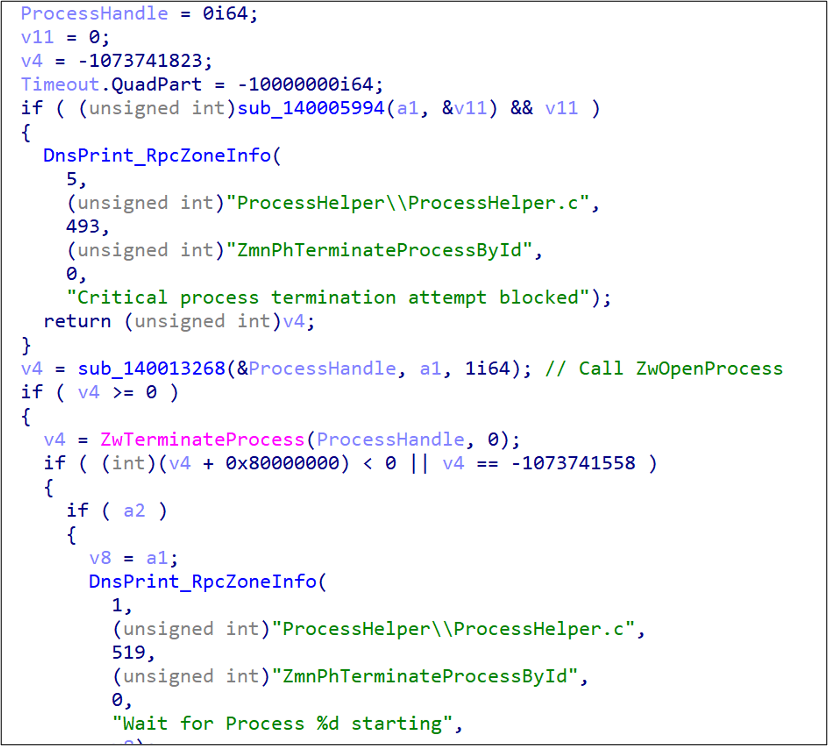
We listed the targeted processes for termination here. Note that many of these processes are for various security products:
- 360rp.exe
- 360rps.exe
- 360Safe.exe
- 360sd.exe
- 360tray.exe
- 360Tray.exe
- Aliyun_assist_service.exe
- AliYunDun.exe
- AliYunDunUpdate.exe
- cyserver.exe
- cytray.exe
- MpcmdRun.exe
- MsMpEng.exe
- NisSrv.exe
- SecurityHealthSystray.exe
- tlaworker.exe
- yunsuo_agent_daemon.exe
- Yunsuo_agent_service.exeZhuDongFangYu.exe
Once the process termination is completed, SPHijacker disables process execution by forcefully causing the targeted applications to crash upon launching, a technique we referred to earlier as stack rumbling. This technique is a type of DoS attack that abuses undocumented MinimumStackCommitInBytes values in the IFEO registry key via the following steps:
- Modifying the registry HKLMSOFTWAREMicrosoftWindows NTCurrentVersionImage File Execution Options{target process name}.
- Creating a new value, MinimumStackCommitInBytes, with 0x88888888 as its data. Any value deemed large enough is acceptable.
- Waiting for the next process launch to take place. It’s important to note that this depends on whether the targeted process is antivirus-related. There is usually a need to wait for the operating system to reboot.
- Once the targeted process is launched, it will soon crash due to stack overflow.

Here’s the full list of targeted processes:
- 360rps.exe
- 360Safe.exe
- 360sd.exe
- 360sdrun.exe
- 360tray.exe
- 360Tray.exe
- aliyun_assist_service.exe
- AliYunDun.exe
- AliYunDunUpdate.exe
- CNTAoSMgr.exe
- cyserver.exe
- cytray.exe
- mcafee-security.exe
- mcafee-security-ft.exe
- MpCmdRun.exe
- MsMpEng.exe
- NisSrv.exe
- NTRTScan.exe
- qmbsrv.exe
- QQPCRTP.exe
- QQPCTray.exe
- SecurityHealthSystray.exe
- tlaworker.exe
- TmCCSF.exe
- tmlisten.exe
- TmListen.exe
- yunsuo_agent_daemon.exe
- yunsuo_agent_service.exe
- ZhuDongFangYu.exe
As a result of stack rumbling via IFEO, the targeted process failed to start with the exit code 0xC0000017, despite the process requiring high privilege. The exit code means “Status No Memory.”
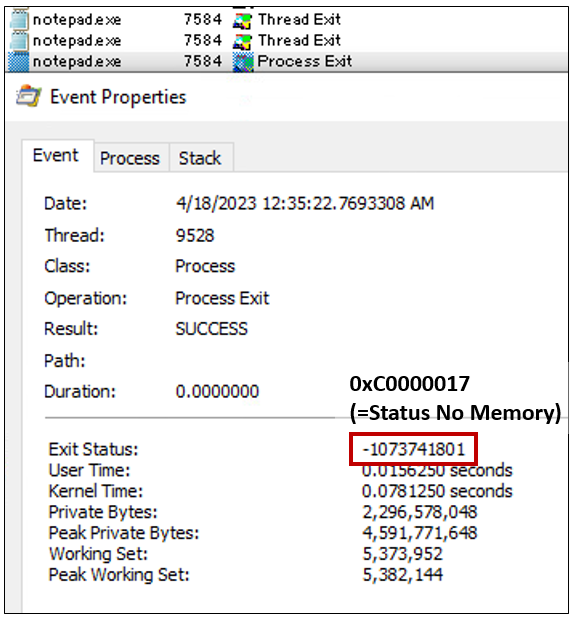
Figure 10. An example of a “notepad.exe” file that failed upon execution
IFEO registry has been known to contain various options for process creation. While it can be used to attach a debugger to an executable file, it can also be used to interrupt the process execution flow, a method known as IFEO injection. We couldn’t find a complete documentation of MinimumStackCommitInBytes in any online resource. The IFEO values will be loaded upon process initialization by ntdll!LdrpInitializeExecutionOptions. Now, let us reverse ntdll.dll.
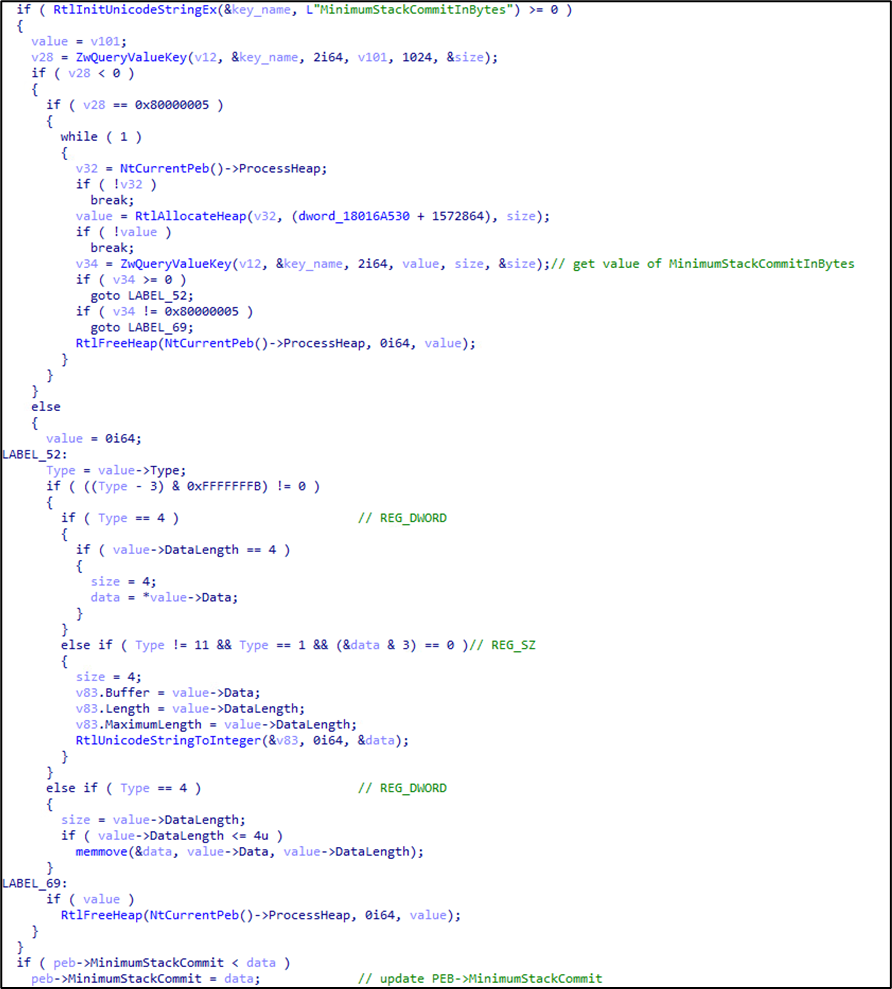
The pseudocode ntdll!LdrpInitializeExecutionOptions updates PEB->MinimumStackCommit with the value of MinimumStackCommitInBytes in the IFEO registry. It should be noted that Microsoft also doesn’t provide documentation on PEB->MinimumStackCommit. Let’s debug the target process to identify how this value will be used.
Upon execution of the stack rumbling-affected process, a debugger catches a stack overflow exception in ntdll!LdrpTouchThreadStack.

Upon reversing ntdll!LdrpTouchThreadStack, we found that it receives PEB->MinimumStackCommit as an argument, which was updated in ntdll!LdrpInitializeExecutionOptions.

Figure 13. Image shows “ntdll!LdrpTouchThreadStack” receiving “PEB->MinimumStackCommit”
The given value will be used to define the size of stack to commit upon initializing the stack of the main thread. Therefore, if the value in PEB->MinimumStackCommit is large enough to touch beyond a stack region, the Windows operating system triggers stack overflow. But the exception handler catches the exception overflow, which returns STATUS_NO_MEMORY (=0xC0000017) as a result of ntdll!LdrpTouchThreadStack.
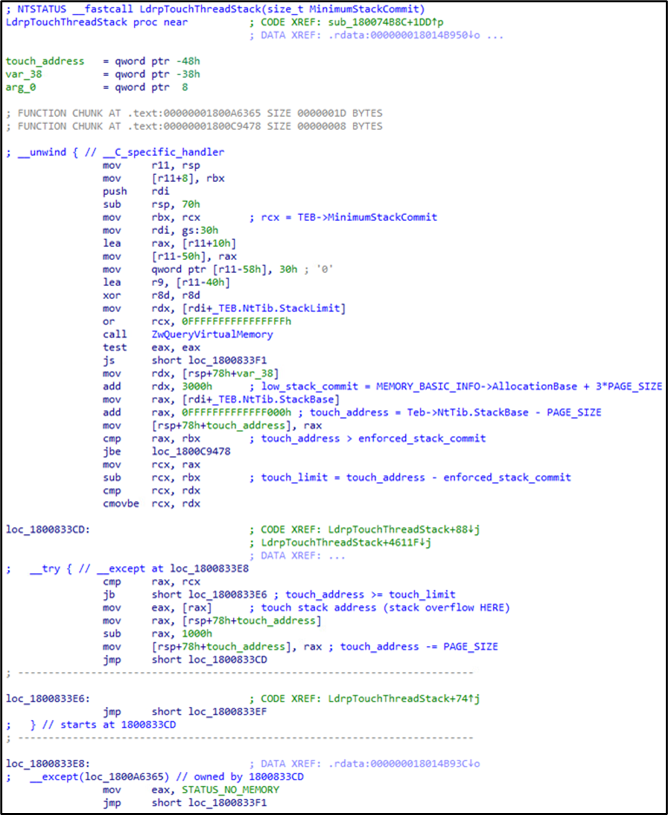
If ntdll!LdrpTouchThreadStack returns any error, ntdll.dll will invoke ZwTerminateProcess with the given error code, which would be STATUS_NO_MEMORY (=0xC0000017) in this case.
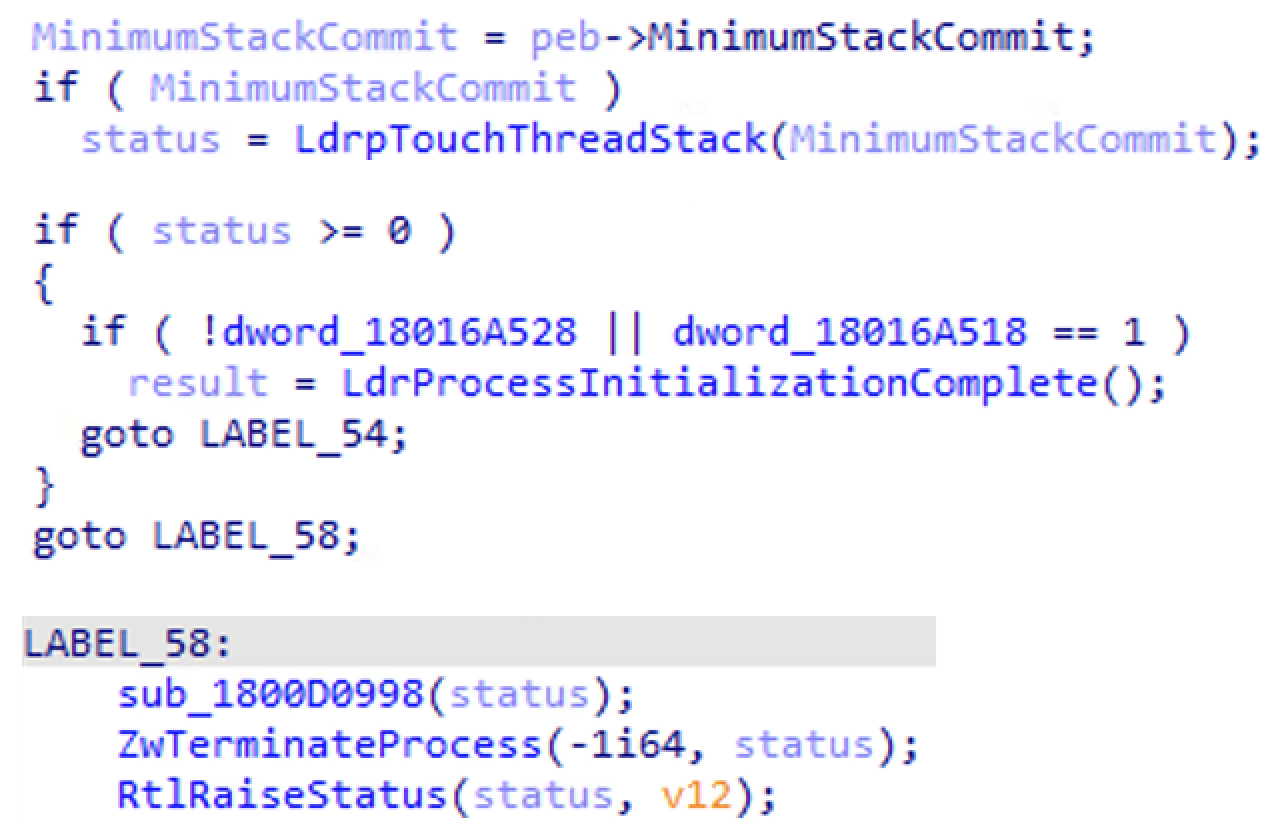
As a result, we found that the value of MinimumStackCommitInBytes associated with a specific process in the IFEO registry key will be used to define the minimum size of stack to commit in initializing the main thread. If the stack size is too large, it will trigger a stack overflow exception and terminate the current process. This is how stack rumbling via IFEO works.
Other notable threat-hunting findings
During threat hunting, we found related samples on a third-party malware scanning service provider and started tracking the samples as Roxwrapper. Roxwrapper is disguised as a normal DLL file, srpapi.dll, and works as a dropper. We checked Roxwrapper’s embedded content and found Bigpipeloader as one of the embedded components used in its previous campaign. Bigpipeloader was previously used in past Earth Longzhi-related samples. Roxwrapper’s more complicated encryption suggests that the attackers might still be testing it to see if it can better evade security products.
Table 1 shows all the components dropped by Roxwrapper and their corresponding descriptions:
TABLE HERE
| Dropped ;file names | Description |
| Tambahan TP MENLU-DUBES AS revDIR.docx (Tong hop bao cao giao ban Khoi.docx) | Embedded decoy documents |
| ap.dll | The SSP module loader through RPC, which is implemented based on the proof of concept |
| apssp.dll | A security service provider (SSP) module for credential dumping |
| dwm.exe | A privilege escalation tool based on a proof of concept |
| dllhost.exe | A type of malware used to collect and upload user data. It is also used to download more payloads from remote servers. |
| StartMenuExperienceHost.exe | Bigpipeloader, which we introduced in our previous Earth Longzhi report |
Although Roxwrapper is not in the DLL file samples used in the actual incidents, this information is nonetheless noteworthy because it can be indicative of Earth Longzhi’s potential targets. Also, the information points to a new component, dwm.exe, which is a new privilege escalation tool that abuses Task Scheduler.
Embedded documents
We found some decoy documents written in Vietnamese and Indonesian, as seen in Figures 16 and 17. Based on these decoy documents, it can be inferred that the threat actors were keen on targeting users in Vietnam and Indonesia for its next wave of attacks.
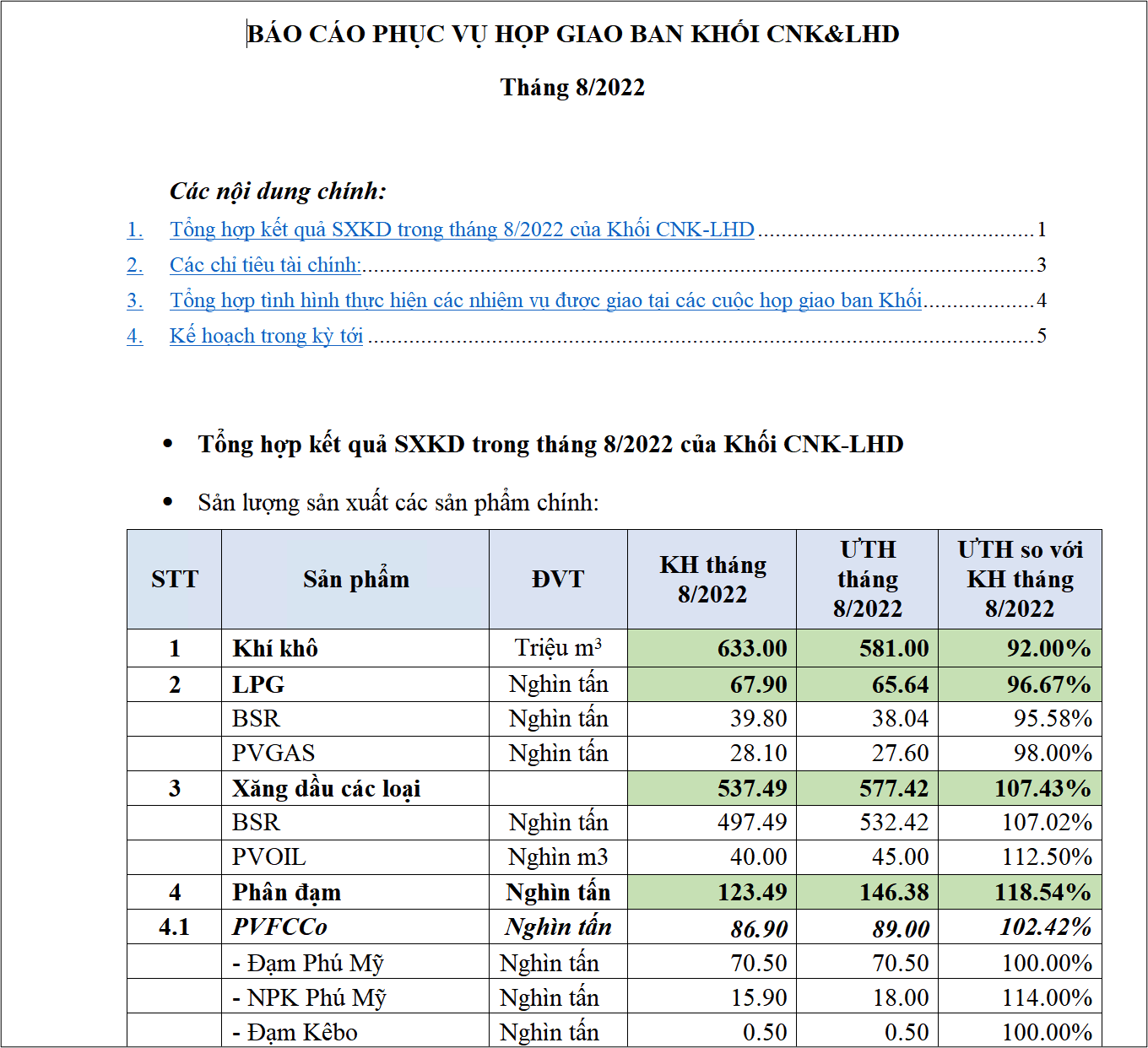
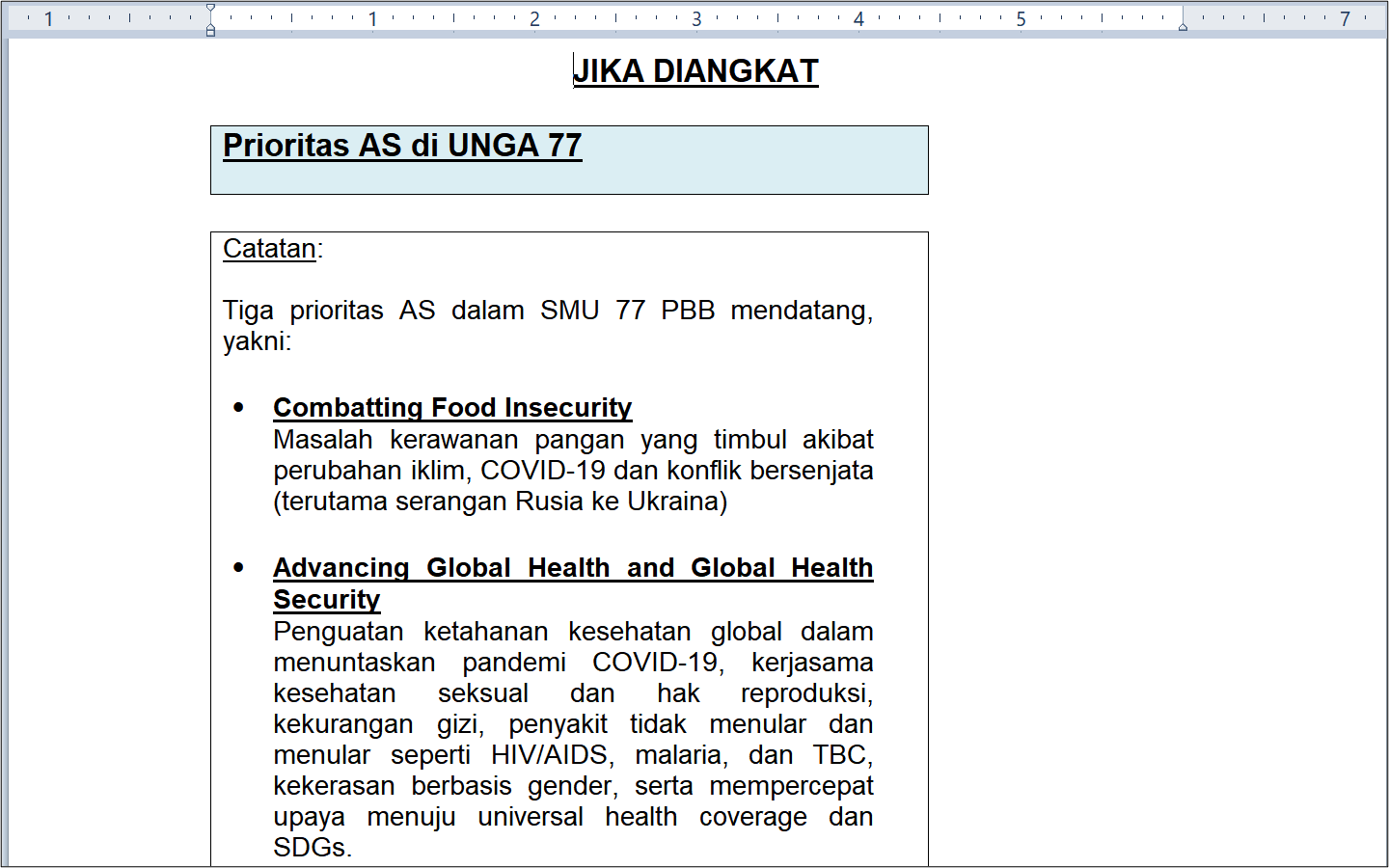
Privilege escalation by abusing task scheduler
Another notable component that we found in our threat hunting is dwm.exe, a new tool used for privilege escalation. It is implemented based on an open-source proof of concept on GitHub. First, dwm.exe replaces the image path name and the command-line information with C:Windowsexplorer.exe for defense evasion. Then, the Component Object Model (COM) object, IElevatedFactoryServer, is used to bypass the Windows User Account Control (UAC) mechanism and register the given payload as a scheduled task with the highest privilege. This approach enables the specified binary to be launched with system privileges. This is the first time that we’ve seen Earth Longzhi actors use this relatively new technique in its operations.
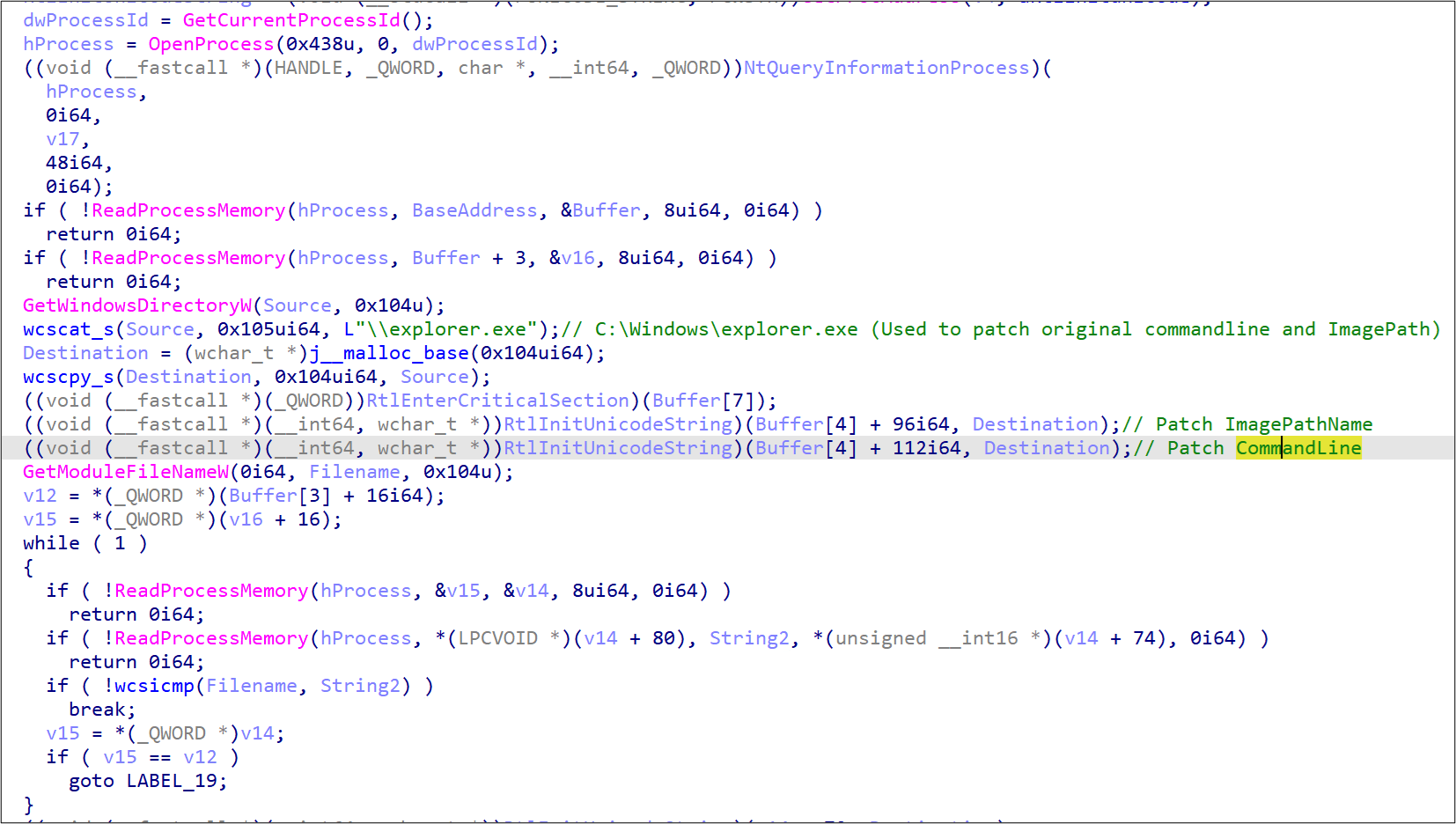

As shown in Figure 20, the created scheduled task was set up with system privileges and disguised as a legitimate Google Update scheduled task. The specified payload, dllhost.exe, is a downloader used to retrieve more payload from the remote server.
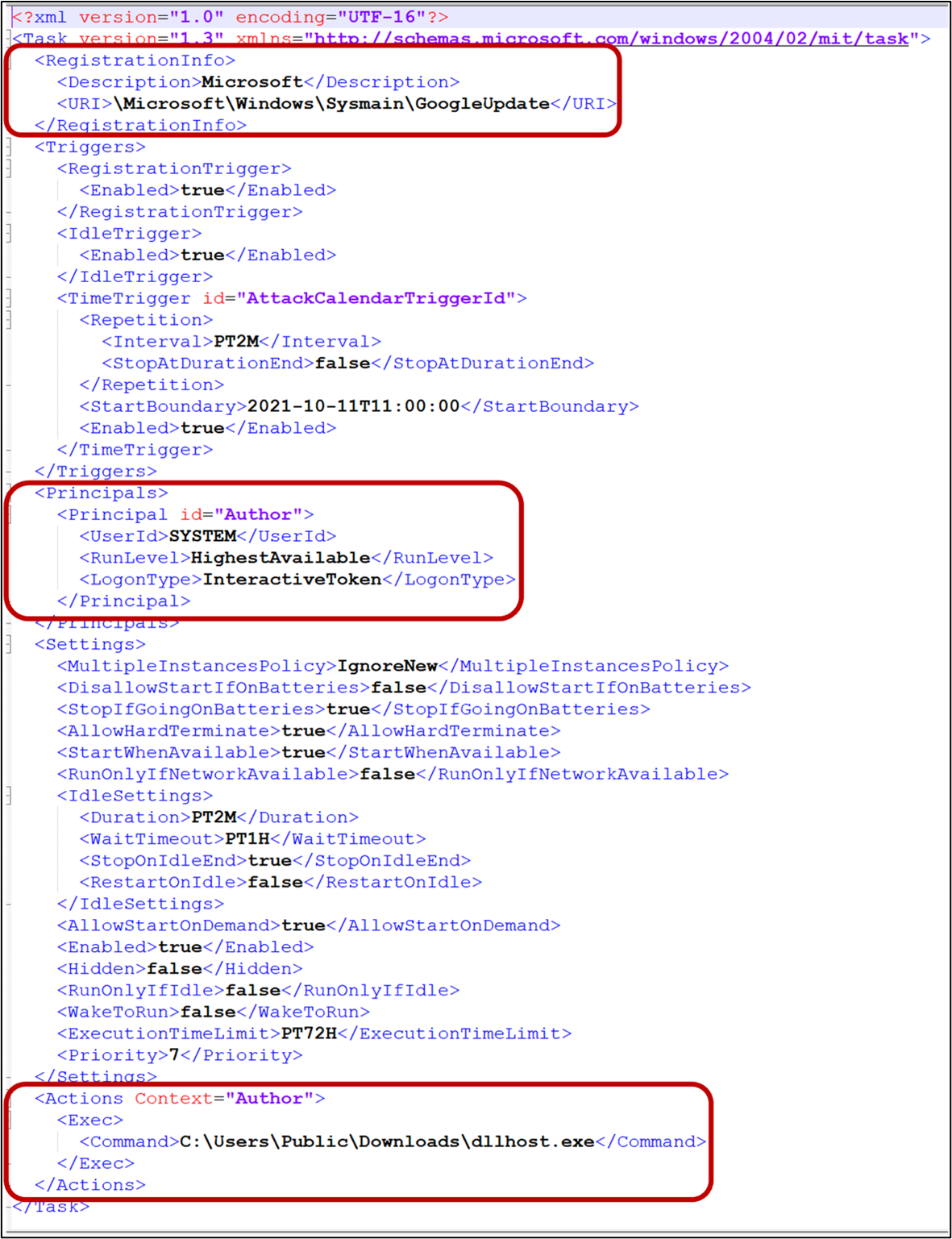
Profile of Earth Longzhi’s recent targets
A closer look at the samples we’ve gathered reveals that the group’s new campaign is aimed at the Philippines, Thailand, Taiwan, and Fiji. Government, healthcare, technology, and manufacturing comprise the affected industries. Organizations in the Philippines, Thailand, and Taiwan had already been among Earth Longzhi’s previous targets, while the attacks on Fiji-based firms were the first we’ve seen in our monitoring of the group. Based on the document embedded in the samples that we saw, Vietnam and Indonesia are possibly the group’s next targeted countries.
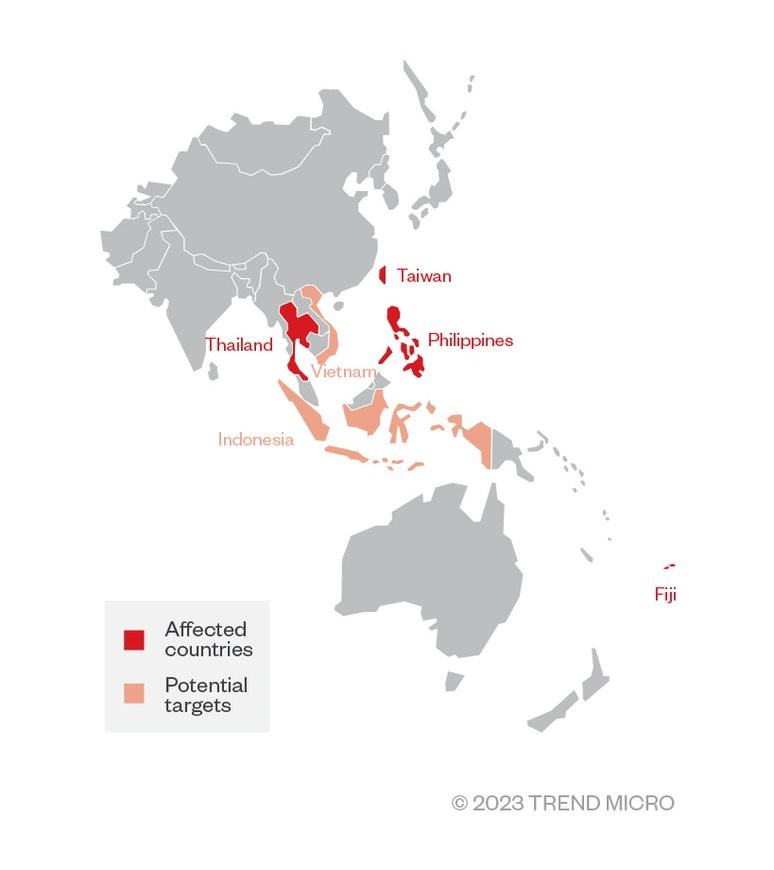
Conclusion
In the fourth quarter of 2022, we discovered a new subgroup of APT41 that we tracked as Earth Longzhi. In the process, we revealed two different campaigns that took place from 2020 to 2022. This follow-up article to our previous report aims to flag readers that Earth Longzhi remains in circulation and is expected to improve its TTPs. Here, we revealed that the campaign deployed a fake mpclient.dll, launched through signed Windows Defender binaries, to decrease its risk of exposure. To evade and disable security products, Earth Longzhi adopted the following approaches:
It used Microsoft Windows RPC to create a system service instead of standard Windows APIs.
It terminated running security products via a vulnerable driver, zamguard64.sys, which is essentially a BYOVD attack.
It modified IFEO registries to restrict the execution of security products.
We also shared some interesting threat-hunting findings. Although the samples that we’ve collected resemble testing files, they can still be useful because they contain information on Earth Longzhi’s potential targets and new techniques that it might employ in the future. From the embedded documents that we’ve collected, we can infer that Vietnam and Indonesia are the countries that they will likely aim at next. Notably, the group’s possible abuse of Task Scheduler to escalate privileges for persistence is a new technique that it might use in future campaigns.
Another noteworthy insight is that the threat actors showed an inclination for using open-source projects to implement their own tools. There is evidence to suggest that the group spruces up its toolset during periods of inactivity. With this knowledge in mind, organizations should stay vigilant against the continuous development of new stealthy schemes by cybercriminals.
MITRE
| Tactics | Techniques |
| Credential Access | T1003.001 – OS Credential Dumping: LSASS Memory |
| Execution | T1569.002 – System Services: Service Execution |
| Defense Evasion | T1574.002 – Hijack Execution Flow: DLL Side-Loading |
| T1140 – Deobfuscate/Decode Files or Information | |
| T1070.004 – Indicator Removal: File Deletion | |
| T1036.005 – Match Legitimate Name or Location | |
| Persistence | T1053.005 – Scheduled Task |
| Privelege Escalation | T1548.002 – Bypass User Account Control |
| T1068 – Exploitation for Privilege Escalation | |
| T1546.012 – Event Triggered Execution: Image File Execution Options Injection |
Indicators of compromise (IOCs)
| SHA256 | Detections |
| 7910478d53ab5721208647709ef81f503ce123375914cd504b9524577057f0ec | Rootkit.Win64.SPHIJACKER.ZYKB |
| ebf461be88903ffc19363434944ad31e36ef900b644efa31cde84ff99f3d6aed | Trojan.Win64.CROXLOADER.ZYJL |
| 21ffa168a60f0edcbc5190d46a096f0d9708512848b88a50449b7a8eb19a91ed | Trojan.Win64.CROXLOADER.ZTKC |
| 942b93529c45f27cdbd9bbcc884a362438624b8ca6b721d51036ddaebc750d8e | Trojan.Win64.CROXLOADER.ZTKC |
| 75a51d1f1dd26501e02907117f0f4dd91469c7dd30d73a715f52785ea3ae93c8 | Backdoor.Win64.COBEACON.ZYKB |
| 4399c5d9745fa2f83bd1223237bdabbfc84c9c77bacc500beb25f8ba9df30379 | Backdoor.Win64.COBEACON.ZYJL.enc |
| 8327cd200cf963ada4d2cde942a82bbed158c008e689857853262fcda91d14a4 | Backdoor.Win64.COBEACON.SMTHA |
| 9eceba551baafe79b45d412c5347a3d2a07de00cc23923b7dee1616dee087905 | Trojan.Win32.ROXWRAPPER.ZYJL |
| 630bb985d2df8e539e35f2da696096e431b3274428f80bb6601bbf4b1d45f71e | Trojan.Win32.ROXWRAPPER.ZYJL |
| ef8e658cd71c3af7c77ab21d2347c7d41764a68141551938b885da41971dd733 | HackTool.Win64.TaskSchUAC.ZYJL |
| e654ecc10ce3df9f33d1e7c86c704cfdc9cf6c6f49aa11af2826cbc4b659e97c | Trojan.MSIL.DULLDOWN.ZTKA |
| 16887b36f87a08a12fe3b72d0bf6594c3ad5e6914d26bff5e32c9b44acfec040 | HackTool.Win64.MIMIKATZ.ZYKA |
| 39de0389d3186234e544b449e20e48bd9043995ebf54f8c6b33ef3a4791b6537 | HackTool.Win64.MIMIKATZ.ZYKA |
| Domain/IP | Description |
| 194.31.53[.]128 | C&C |
| 198.13.47[.]158 | C&C |
| 172.67.139[.]61 | C&C |
| 207.148.115[.]125 | C&C |
| 64.227.164[.]34 | C&C |
| evnpowerspeedtest[.]com | C&C |
| www.updateforhours[.]com | C&C |
| dns.eudnslog[.]com | C&C |
| asis.downloadwindowsupdate[.]co | C&C |
| 194.31.53[.]128 | Download site |
| 198.13.47[.]158 | Download site |
Tags
sXpIBdPeKzI9PC2p0SWMpUSM2NSxWzPyXTMLlbXmYa0R20xk

